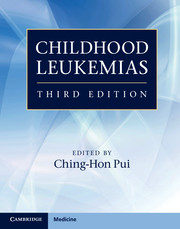Book contents
- Frontmatter
- Contents
- List of contributors
- Preface
- Section 1 History and general issues
- Section 2 Cell biology and pathobiology
- Section 3 Evaluation and treatment
- Section 4 Complications and supportive care
- 29 Acute complications
- 30 Late complications after leukemia therapy
- 31 Therapy-related leukemias
- 32 Infectious complications in leukemia
- 33 Hematologic supportive care
- 34 Pain management
- 35 Psychosocial issues
- 36 Nursing care
- Index
- Plate Section
- References
35 - Psychosocial issues
from Section 4 - Complications and supportive care
Published online by Cambridge University Press: 05 April 2013
- Frontmatter
- Contents
- List of contributors
- Preface
- Section 1 History and general issues
- Section 2 Cell biology and pathobiology
- Section 3 Evaluation and treatment
- Section 4 Complications and supportive care
- 29 Acute complications
- 30 Late complications after leukemia therapy
- 31 Therapy-related leukemias
- 32 Infectious complications in leukemia
- 33 Hematologic supportive care
- 34 Pain management
- 35 Psychosocial issues
- 36 Nursing care
- Index
- Plate Section
- References
Summary
Introduction
Progress in the treatment of childhood leukemia has been an almost unparalled success story. Survival rates for children with acute lymphoblastic leukemia (ALL) continue to increase, now approaching 90%. At the same time, advances in supportive care have reduced or eliminated many of the more invasive or distressing aspects of treatment, improving quality of life for patients during the acute phase of active therapy. These rapid medical advances have created a “moving target” for psychosocial researchers and have changed the focus of psychosocial outcomes research in this population. Research for issues such as nausea and vomiting, procedural distress, palliative care, and bereavement is less emphasized, while studies of long-term sequelae in survivors, particularly neurocognitive issues, have increased substantially. As data regarding late effects have continued to emerge, childhood leukemia is more appropriately conceptualized as a chronic illness, and psychosocial researchers are challenged to establish models of assessment and intervention to meet the diverse needs of the growing population of survivors.
Reflecting this shift in research focus, this chapter has been considerably revised from the earlier editions. It begins with a review of issues faced by survivors after completion of treatment, focusing on neurocognitive sequelae, the risk factors and mechanisms involved, and the interventions to prevent or ameliorate these effects, which have been the areas of greatest research activity since the early 2000s. This is followed by a review of acute issues, and the more general areas of emotional functioning and adjustment of patients and their families. Sections on palliative care, health behaviors, and health promotion interventions have been eliminated, since they are covered in other chapters of this volume.
- Type
- Chapter
- Information
- Childhood Leukemias , pp. 823 - 838Publisher: Cambridge University PressPrint publication year: 2012
References
- 1
- Cited by



